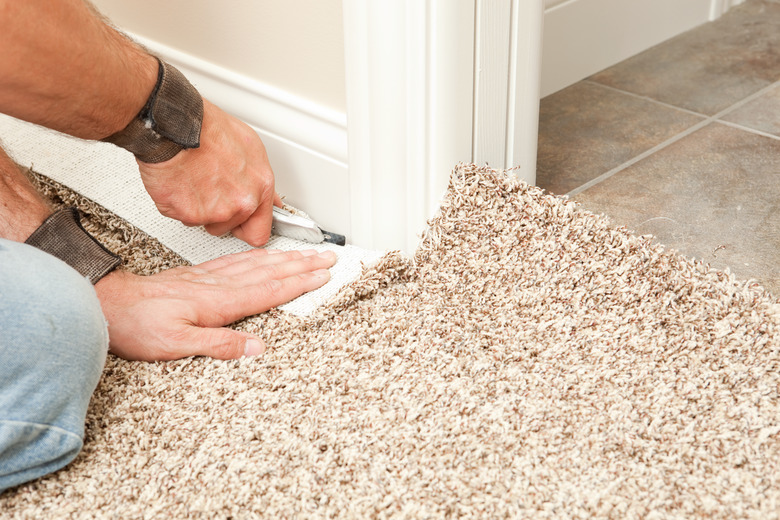How To Install Carpet Over Existing Carpet
Installing carpet over carpet is a unique solution when it comes to old carpeting. In some cases, the old carpet is truly stuck to the floorboards, and cannot be removed without further cost or damage to the structure. Whatever the case may be, it's possible to install carpet over carpet without sacrificing design or hindering the home's resale value.
Carpet Over Carpet with Throw Rugs
Carpet Over Carpet with Throw Rugs
Before committing to a big project like installing wall-to-wall carpeting, ask yourself this: Does a rug look good on carpet? You can absolutely lay a throw rug on existing carpet to change the look and feel of the room without spending time, energy and money on a whole room reflooring. Textured throw rugs or bold patterns and colors can add depth to a dull beige carpet and help to anchor existing furniture pieces.
Many rental homes and apartments come standard with a pale or beige carpet that serve as a blank slate for the tenant's décor style. Try a bright Moroccan-inspired rug with fringe over the carpet in the main living room, or a large, eye-catching color under the dining room table. This protects the carpet underneath, keeping that security deposit intact. There's no need for a floor pad either; the carpet under the rug serves as padding.
Can You Lay Carpet on Top of Carpet?
Can You Lay Carpet on Top of Carpet?
For those who want to lay carpet over carpet in a more permanent way, there are a few things to consider. The functionality of the space shouldn't be compromised by your carpet over carpet; that means that doors should still be able to open, vents cannot be blocked, and the height of the duel carpet does not cause a tripping hazard.
Low-pile carpeting without padding works best for this. The height is already low, and the new carpet will not add much more depth. It's not a good idea to lay carpet over high-pile, plush, shag, soft or sporadically worn carpets. Too much height will be added to the high-pile carpets, and the soft or shag carpets will make for an uneven surface. Worn carpets with holes or heavy damage from foot traffic will also be uneven, and can be a fall hazard.
Plus, the areas that are worn down from heavy foot traffic will form depressions under the new carpet, quickly creating slopes and uneven surfaces. In these cases, it is more cost-conscious to remove the old carpet completely before installing a new one.
Can You Lay Carpet Tiles Over Old Carpet?
Can You Lay Carpet Tiles Over Old Carpet?
Carpet tiles can be laid over old carpet with a bit of effort. First off, the old carpet must be thoroughly cleaned. This goes for all carpet over carpet projects – the old carpet underneath can transfer mold, dirt and other debris into your new carpet. A completely clean carpet is necessary before proceeding.
Using a carpet pad or plywood base over the existing carpet can create an even base for new carpet tiles. Existing low-pile carpet can serve as the carpet pad. Choose carpet tiles that interlock into place. Or use special carpeting metal glue-less clips that save time and can be rearranged when placing on the floor.
Covering Traditional Carpeting with a Tack Strip
Covering Traditional Carpeting with a Tack Strip
For wall-to-wall carpeting, a tack strip is needed to ensure the carpet stays in place. A tack strip is a long wooden strip with nails and tacks that holds the carpet to keep it from bunching or sliding. To use a tack strip with an existing carpet, you'll have to remove 2 inches of carpeting along the wall base of the room with a razor knife so that you'll have room for a replacement tack strip.
You may have to remove existing tack strips that line the wall. If this is the case, it may be worth it to go ahead and remove the old carpet, as it will no longer be anchored to the wall. If there is room for the replacement tack strip, use nails to secure it in place. An additional carpet pad or plywood base can be laid down at this stage as well. Unroll your new carpet and secure it to the tack strip or new base, and use carpet glue to secure any loose spots.
